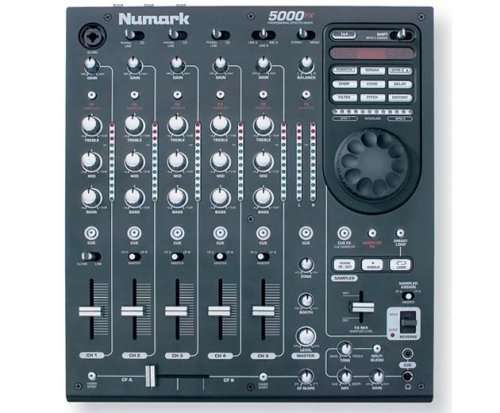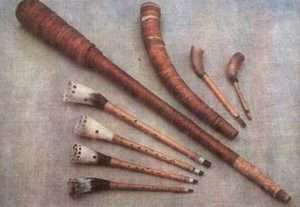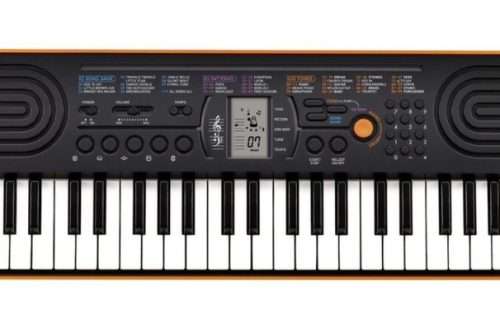
How to choose a DJ effector?
See Effects in the Muzyczny.pl store
Very often in a club or while listening to sets / compilations with our favorite music, we hear different, interesting sounds during the transition between songs. It is the effector – the device responsible for introducing unusual sounds during mixing. Its choice is not as simple as it seems and depends on many factors. So how do you make the right choice? About it in the article above.
What are the possibilities of the effector?
Depending on the model we choose, we get a device that gives us dozens or even hundreds of different effects that we can introduce at any time we choose. In the simplest effectors (which can be found, for example, in more expensive mixers), we have them from a few to a dozen, in more complex models from several dozen to even several hundred.
At the beginning, before we get to know its full capabilities, it is worth knowing what is hidden under the mysterious names of the effects. Below is a description of the most popular and most used:
Echo ( delay) – the effect does not need to be explained. We turn it on and we hear how the sound bounces.
Filter – thanks to it, we can cut or raise the frequency data, which is why we distinguish different types of filtration. The operation can be compared to an equalizer in a mixer.
Reverb – otherwise reverberation. It works on the principle of very short delays, simulating the effect of different rooms. At one point, we can move, for example, to the cathedral, at the second to the great hall, etc.
Flanger – effect resembling a falling plane / jet. Often found in Pioneer devices under the name “jet”.
Distortion – imitation of distorted sound. The effect, similar to those mentioned above, can be properly modulated, obtaining sounds that we like.
Isolator – works like Filter, but not exactly the same. Cuts or boosts selected frequencies.
Slicer – the effect of “cutting” the sound, ie short and quick mutes synchronized with the beat.
Pitch Shifter – consists in changing the “pitch” (key) of the sound without changing its tempo.
Vocoder – thanks to it we have the possibility to “distort” the sound and vocals
Sampler – this is not a typical effect as mentioned above, although it is worth mentioning.
The task of the sampler is to “remember” the selected fragment of music and loop it so that it is played over and over again.
After selecting the appropriate effect, we can also change its parameters, such as the intensity of the effect, duration or looping, frequency, key, etc. In short, we can obtain the sound we want.

Which effector will fit my console?
Since we already know some of the possibilities that we can get, it’s time to choose it. There is not much philosophy here. Which effector will fit our console is strictly dependent on our mixer and actually having the appropriate inputs and outputs. Below is a short description of how to connect the effector and what we will get if our equipment is equipped or not equipped with the appropriate functions.
In the effect loop
This is the best possible way, unfortunately depending on our mixer, and more specifically on whether we have the appropriate outputs / inputs on the rear panel. To connect the effector, we need an output that sends a signal to the process and an input to the return enriched with the signal effect. They are usually marked as a separate section. The advantage of this solution is the possibility of purchasing the effector of any company and introducing the effects to any channel of our choice during the mix. The disadvantage is the cost of a mixer, which is usually more expensive than one without a dedicated effect loop.
Between signal sources
The effector is “plugged in” between our signal source (player, turntable, etc.) and the mixer. Such a connection allows us to introduce effects to the channel between which our additional equipment was plugged in. The disadvantage of such a connection is that it can only handle one channel. The advantage, quite a small one, is that we do not need dedicated inputs / outputs.
Between the mixer and the amplifier
A rather primitive method that does not allow the use of the effector’s capabilities in 100%. The effect of the effector will be applied to the signal which (the so-called sum of signals coming from the mixer) directly goes to the amplifier and to the loudspeakers. We cannot introduce effects separately on the channel we choose. This possibility does not introduce hardware limitations, as we do not need additional inputs / outputs.
Built-in effector in the mixer
One of the most convenient methods because we do not need to connect anything and we have everything at hand, although such a solution has several disadvantages. Among other things, limited possibilities and a small number of effects combined with a high amount of purchase of the mixer.

How can I operate the effector?
There are four options:
• Using the knobs (in the case of a built-in effector in the mixer)
• Using the touch pad (Korg Kaoss)
• With Jog (Pioneer EFX 500/1000)
• Using a laser beam (Roland SP-555)
I leave the choice of the appropriate control to individual interpretation. Each of us has different tastes, preferences and observations, therefore, when deciding on a specific model, you should choose the service option that suits us.
Summation
The Effector allows you to create completely new sounds in real time, which, thanks to the use of appropriate effects, will add a whole new dimension to your mixes and delight listeners.
The choice of a specific model is up to us. To make this statement more precise, we have to choose whether we want to avoid tangling in cables at the expense of fewer functions or, for example, we prefer to control the touch panel rather than rotary knobs.





